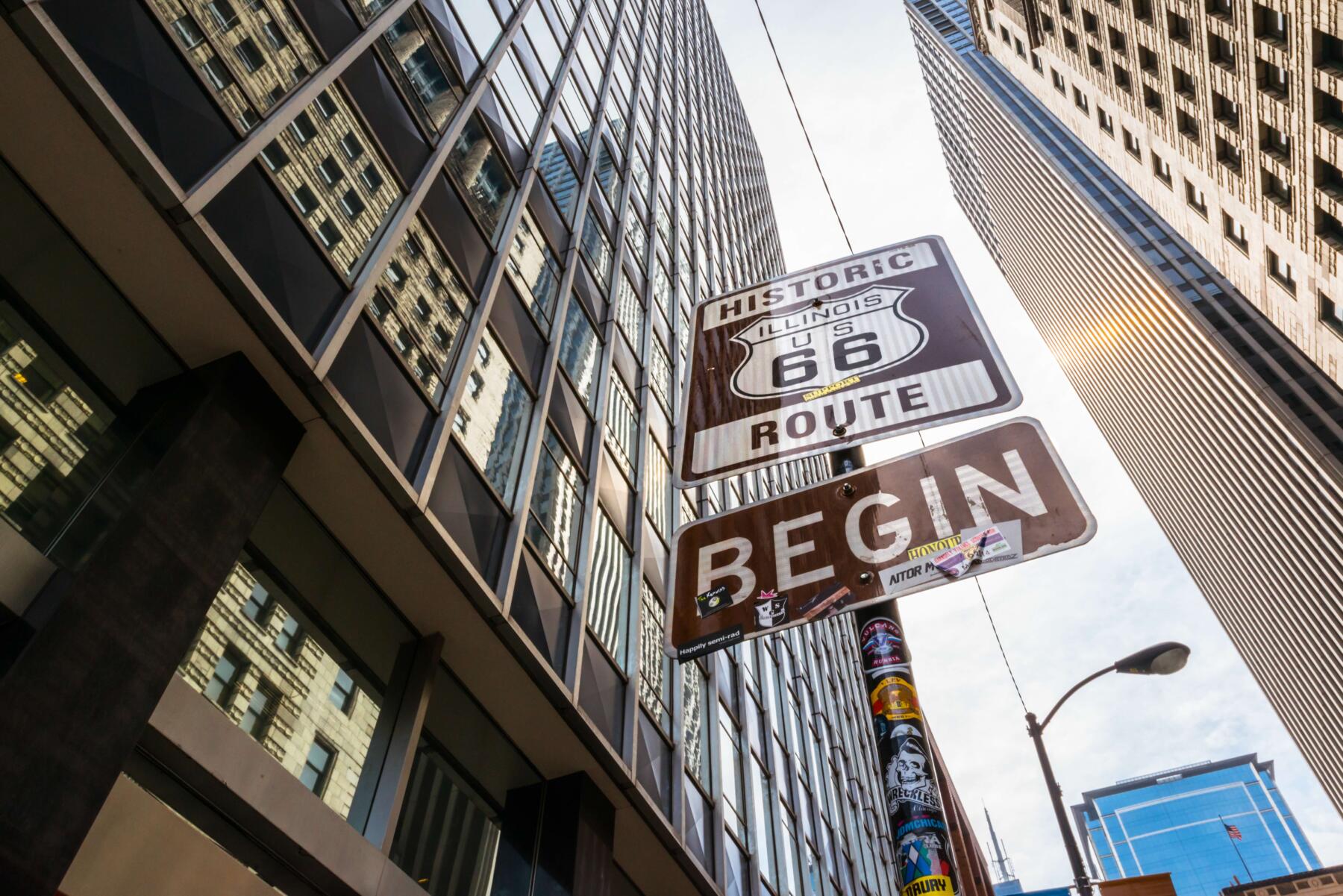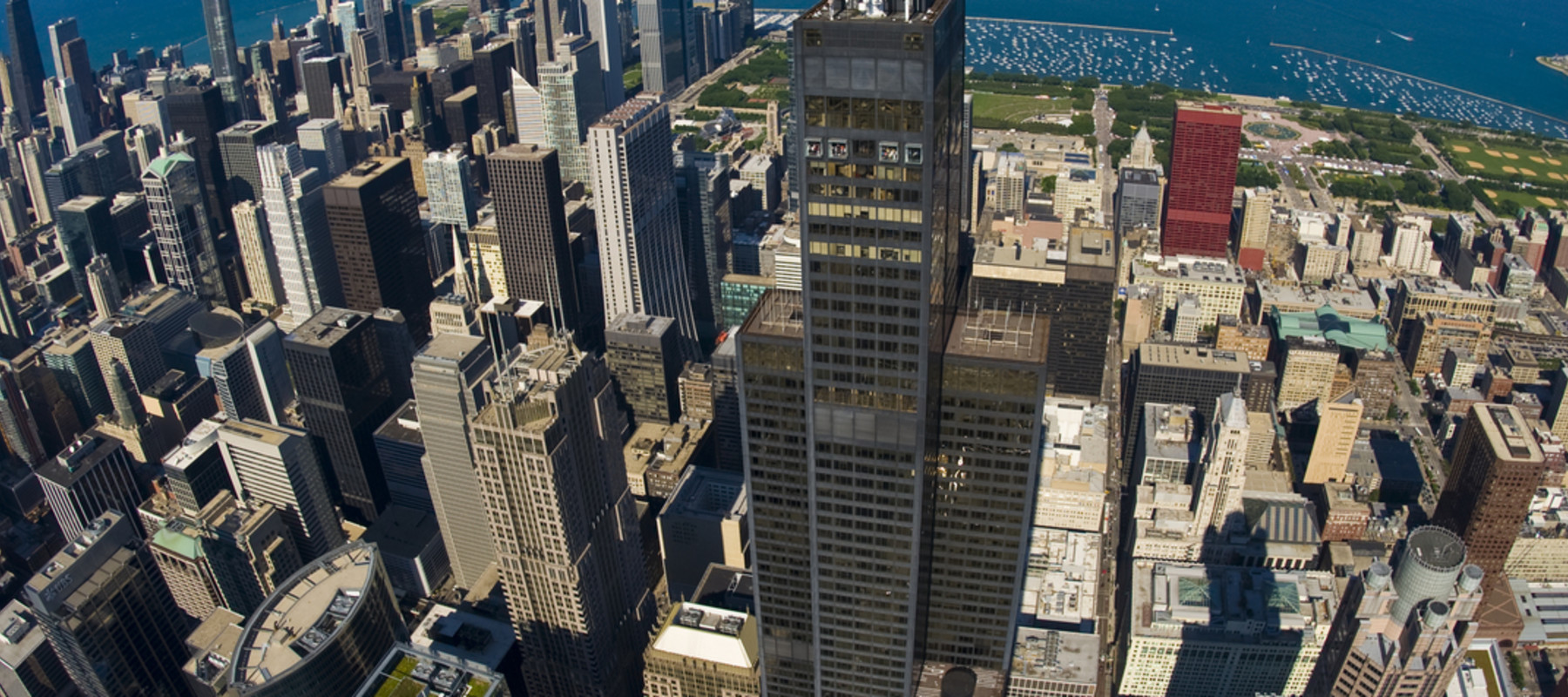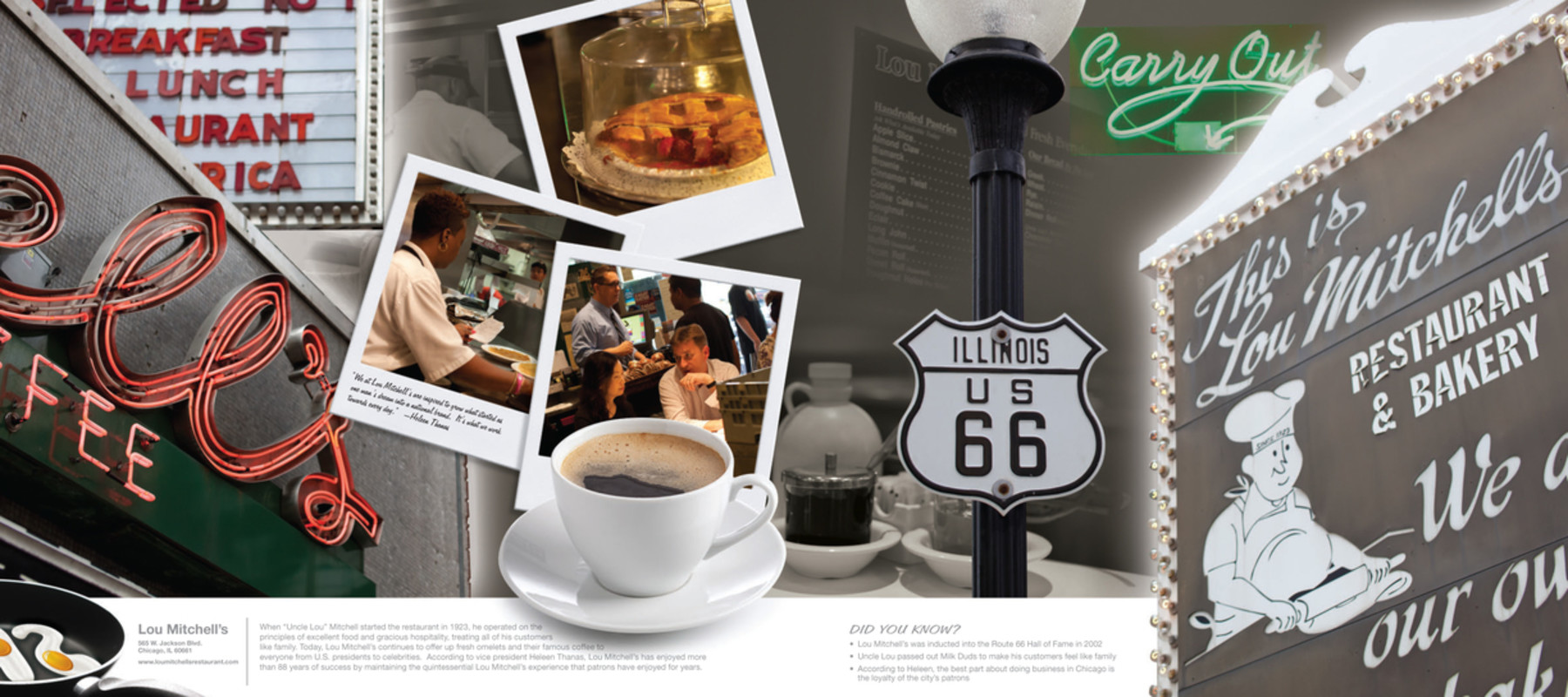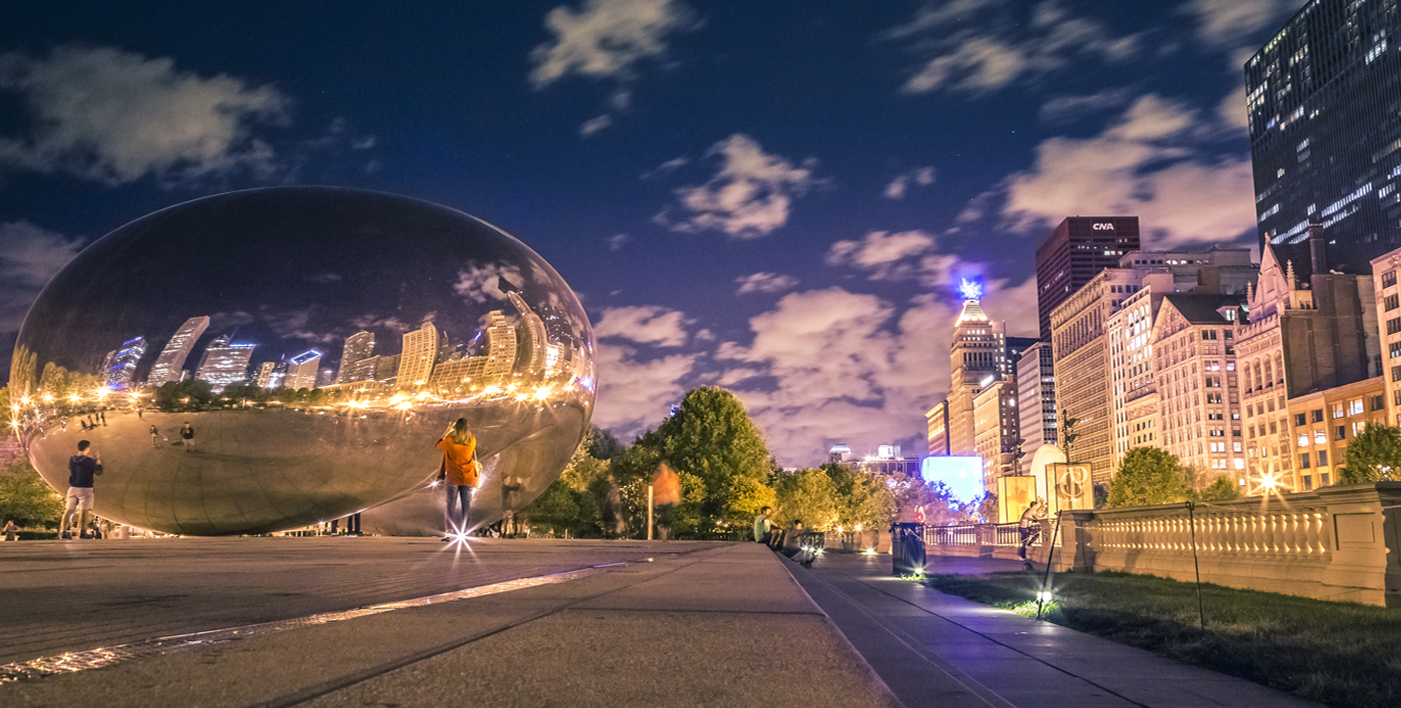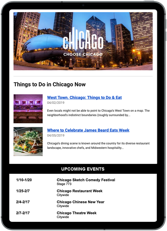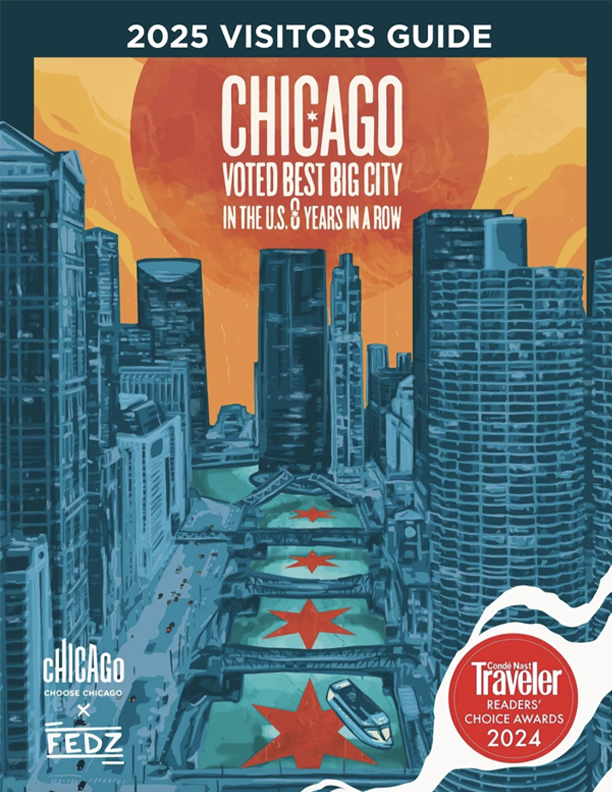It’s America’s most cherished byway, stretching over 2,400 miles from Chicago to Santa Monica.
Countless motorists have rambled along the “double six,” stopping to pay homage to the stunning natural landscapes, important historical landmarks, and iconic (as well as just plain wacky) roadside attractions.
Your adventure of a lifetime begins here, in the midst of downtown Chicago’s hustle and bustle. Here are the don’t-miss sights to see along Route 66’s initial stretch in downtown Chicago.
Visit the official starting point of Route 66
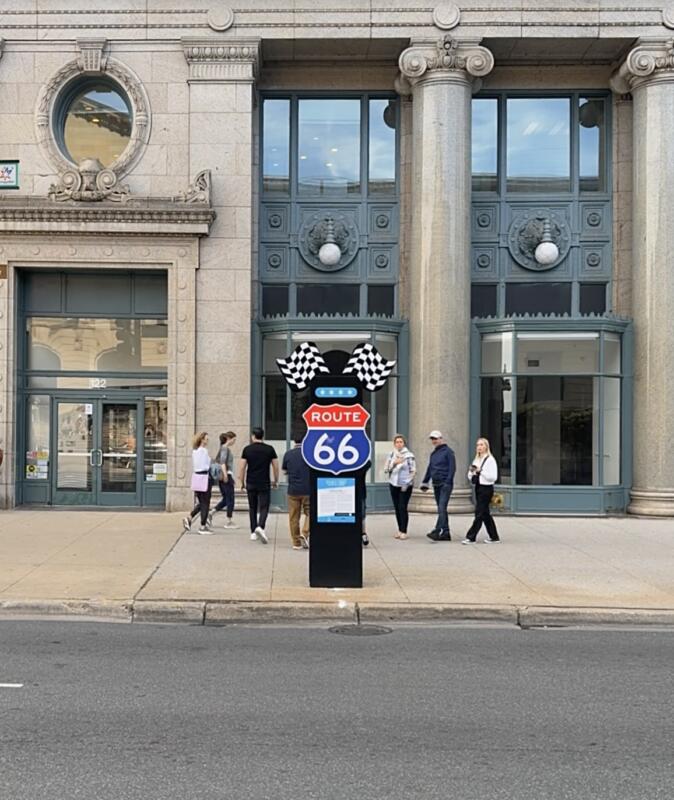
The official Route 66 starting point is located at 122 S. Michigan Ave. near the intersection of South Michigan Avenue and East Adams Street and just across from the Art Institute of Chicago. There, you’ll find an eye-catching pylon with information about the start of the historic route.
However, the Mother Road originally began on Jackson Boulevard at Michigan Avenue.
While early 1920s Chicago boasted one of the largest street railway systems in the world, Jackson Street remained one of the few downtown boulevards without a streetcar line, making it the perfect place for a new, transnational U.S. highway.
Officially named Route 66 on April 30, 1926, Jackson Boulevard became part of the Mother Road and began whisking generations of migrants and road-tripping vacationers westward.
In 1955, however, the boulevard was transformed into a one-way street, and Adams Street at Michigan Avenue became the new launching point for Route 66.
Gas up with a cup of the “World’s Finest Coffee” at Lou Mitchell’s
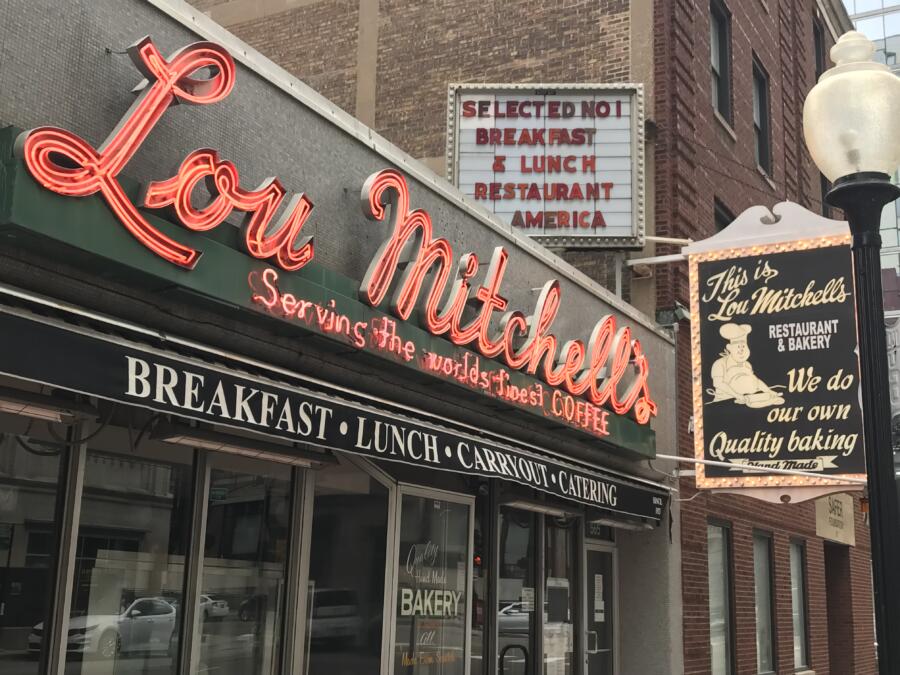
Lou Mitchell’s has been providing the fuel for Route 66 adventurers since the highway first opened for business, earning it the nickname “the first stop on the Mother Road.”
This cozy diner was the city’s first-ever all-day breakfast restaurant when it opened in 1923 along West Jackson Boulevard, the original westbound tract of Route 66.
Though the surrounding area has grown tall with skyscrapers over the years, little has changed inside. The original wooden stools at the counters are packed with regulars sipping coffee, the iconic marquee glows above the door, and the menu offers classic diner fare with a big dose of Greek hospitality.
Most everything here is made in-house daily, from the freshly cut French fries to the homemade bread to the signature orange marmalade. And of course, Lou Mitchell’s is known for dishing up sweet treats, like complimentary donut holes or a scoop of creamy vanilla ice cream to cleanse the palate.
See the Mother Road stretch westward before you from 1,353 feet in the sky at Skydeck Chicago
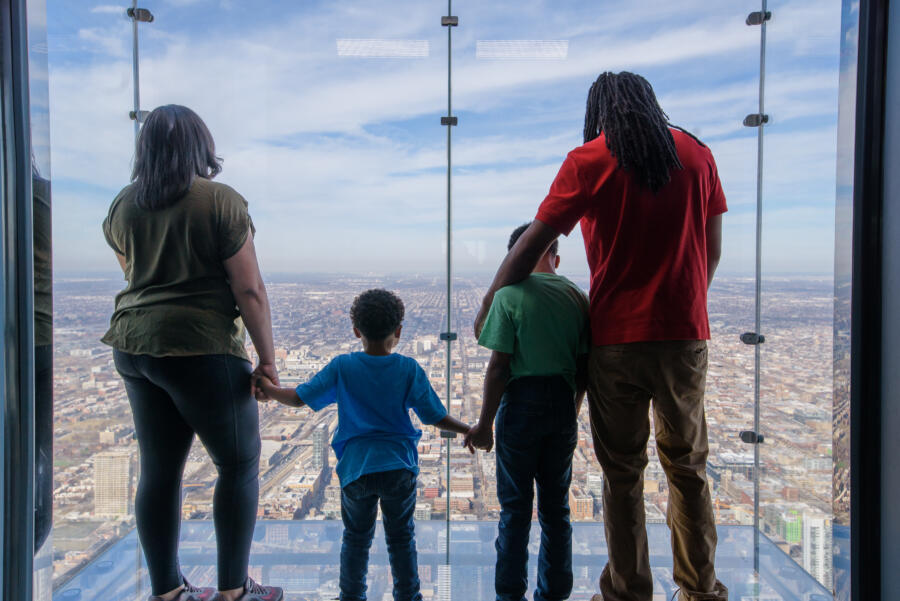
At 1,450 feet high — 1,730 feet if you include its twin antenna towers — Willis Tower is the second tallest building in North America and the twelfth-tallest building in the world.
Completed in 1973, the former Sears Tower was built to house Sears, Roebuck & Co., once the largest retailer in the world.
The tower’s thrilling observation deck, Skydeck Chicago, is the highest in the United States. On a clear day, you can see up to 50 miles down Route 66; looking to the east, you can see across Lake Michigan, all the way to Indiana and Michigan.
For the ultimate look at the road ahead, step onto The Ledge, a series of glass balconies extending four feet from the west-facing facade of the 103rd floor. Peer through the glass floor at Route 66, which lies over a thousand feet below.
Step inside the light-filled lobby of The Rookery, an early Frank Lloyd Wright masterpiece
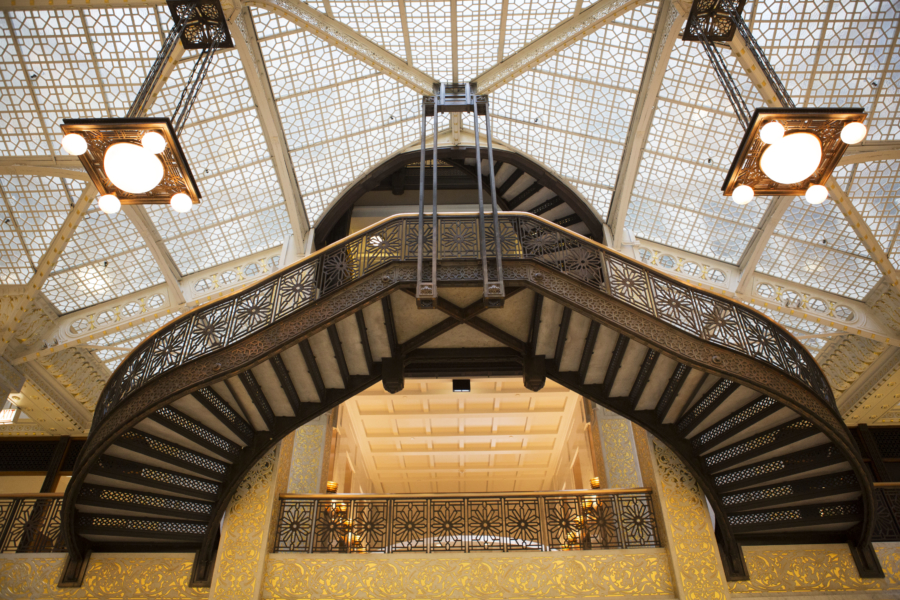
When it opened in 1885, The Rookery building, standing tall at eleven stories, was seen as a soaring skyscraper and an engineering marvel. To this day, it remains the oldest high-rise in the city and is listed on the National Register of Historic Places.
Step into the glorious, two-story light court lobby with its glass ceiling, white-glazed brick walls, sublime light fixtures, and winding staircase, and you’ll see why it’s considered one of architect Frank Lloyd Wright’s masterpieces.
Wright was hired in 1905 to remodel the building’s lobby. He added all his meticulous, Prairie-style touches, including luxurious white marble with Persian-style ornamentation, intricate staircase railings, ornamented light fixtures, and the signature decorative urns at the base of the staircase, creating a modernized design that maximized available light.
Fuel up with German-American cuisine at The Berghoff Restaurant
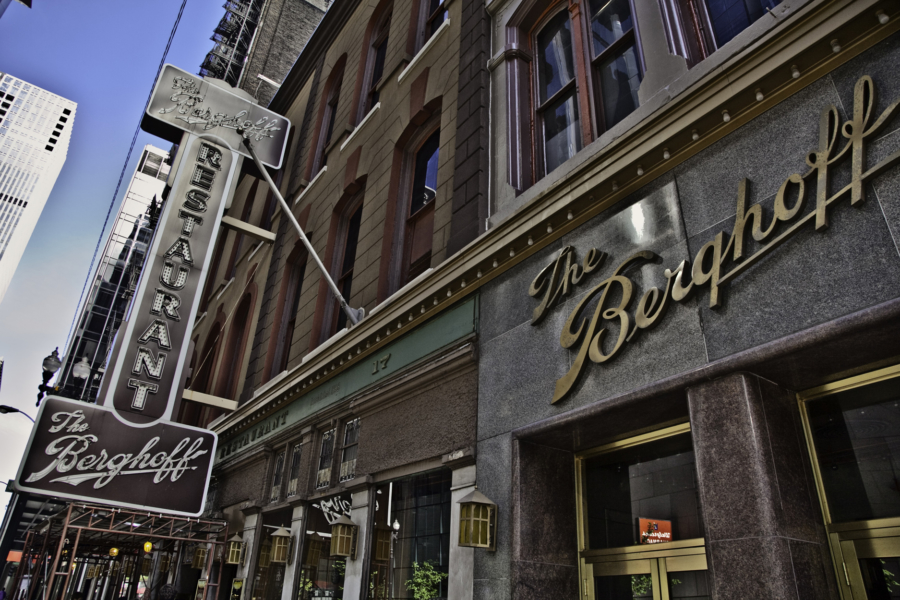
When The Berghoff Restaurant opened its doors in 1898, a stein of beer cost a nickel and came with a hearty (free!) sandwich on the side.
Today, this family-run restaurant stands as the oldest, (almost) continuously operated eatery on Route 66. See if you can spot the first city liquor license granted after Prohibition, which hangs near the bar.
And though the beer and a sandwich now cost more than a nickel, the original sandwich menu is still available — turkey, corned beef, roast beef, and a hard-boiled egg — and The Berghoff’s famed lager is still on draught.
Beyond sandwiches, The Berghoff serves some of the best German-American cuisine in town. It’s the perfect place to fuel up before setting off on an epic road trip.

